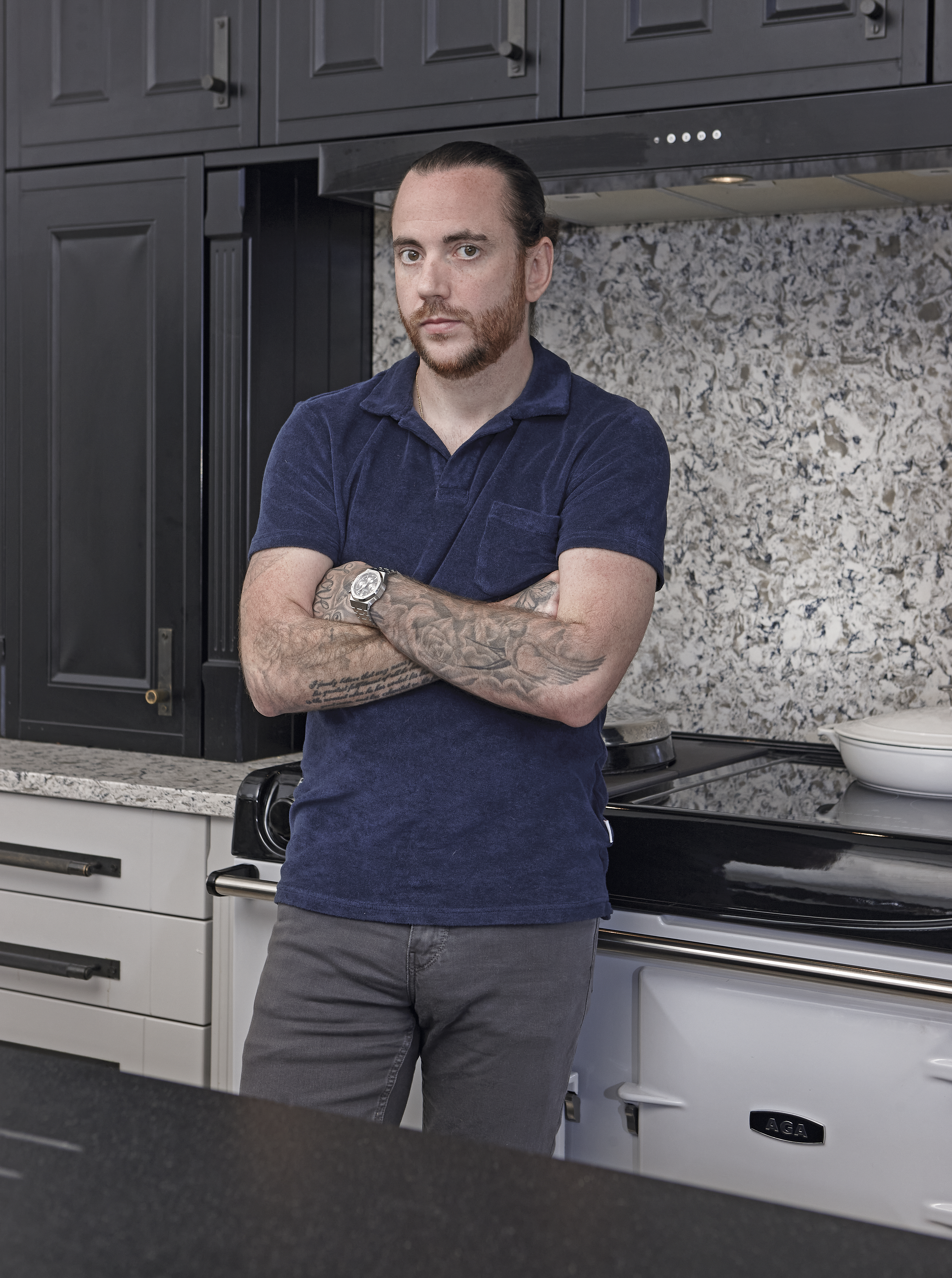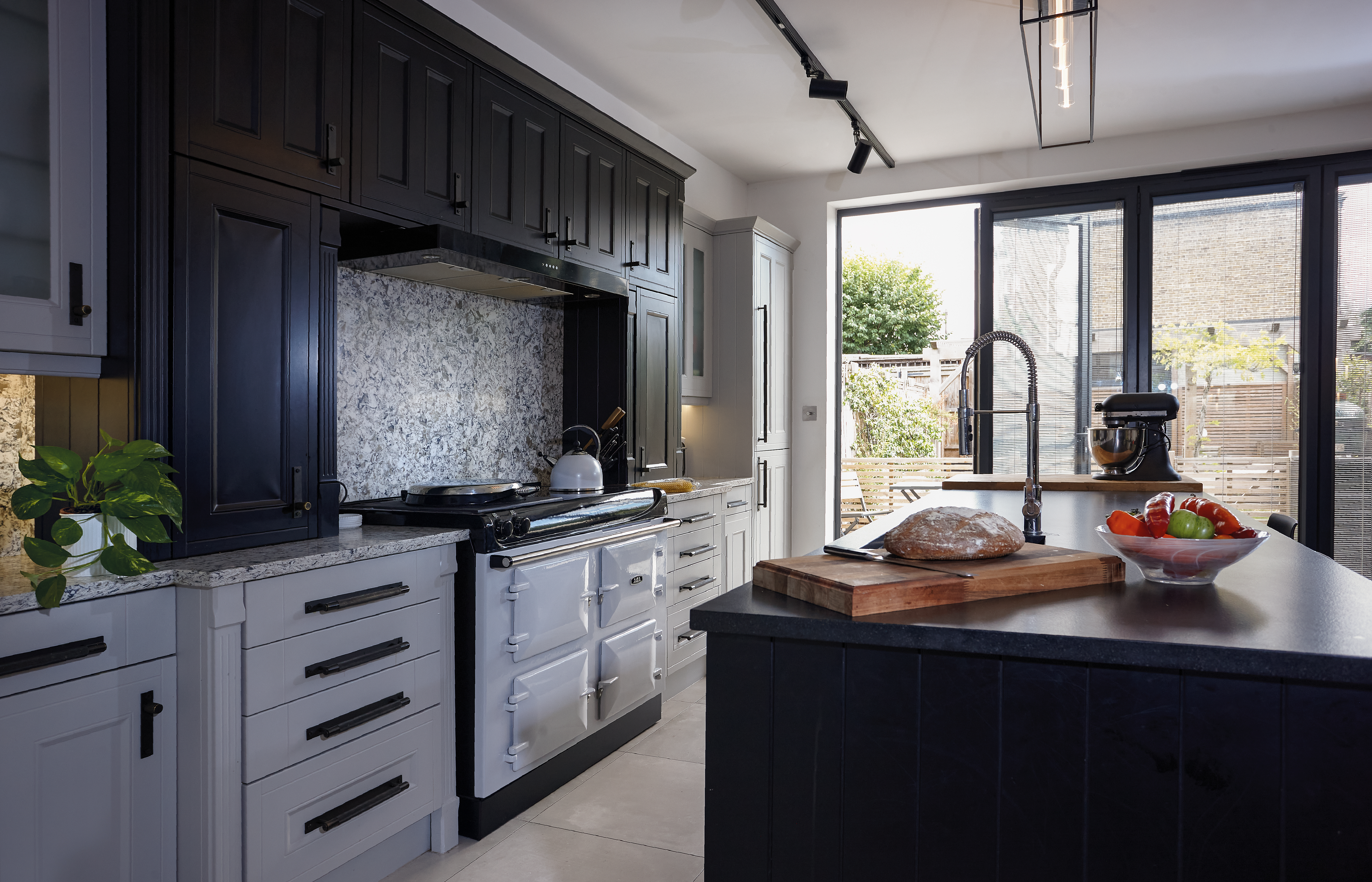We catch up with the renowned chef to chat about art, life in the kitchen and AGA cooking.
Much has been written about Tom Sellers. How he left his working-class roots in Nottingham to work under some of the world’s most famous chefs, including Tom Aikens, Thomas Keller at the French Laundry in Yountville, and René Redzepi at Noma in Copenhagen. How he returned to London to open his first restaurant, Story, when he was just 25 and was awarded his first Michelin star just six months later before gaining his second in 2021.
He’s been described as London’s coolest chef, an enfant terrible, a wünderkind and his food has, rightly, generated endless column inches. Why wouldn’t it? It’s innovative, sumptuous, gorgeous to look at and, of course, delicious. Some weeks after tasting it, I still find myself thinking about something magical he did with duck liver parfait.
 One thing I haven’t read, though, is how funny he is. His comic timing is perfect. “I don’t smile,” he deadpans to our photographer, waiting a couple of beats for the tension to build before breaking into the warmest of grins. I also haven’t read much about how deeply he thinks – something evident as soon as we begin talking.
One thing I haven’t read, though, is how funny he is. His comic timing is perfect. “I don’t smile,” he deadpans to our photographer, waiting a couple of beats for the tension to build before breaking into the warmest of grins. I also haven’t read much about how deeply he thinks – something evident as soon as we begin talking.
“A person’s biggest power is being able to remain present in a world that is trying to force us to look elsewhere,” he says.
Story is a huge success. The concept is a simple one – Tom tells his tale and the narrative of British food through an ever-evolving tasting menu of seasonal dishes.
I ask him about opening the restaurant. “I think with naivety and youth, you’re less scared because you’re not as informed. If you asked me now if I’d do it, I’d say no way! I come from a working-class family – those opportunities don’t come around very often and I felt I’d worked my way to it.
“It was a huge risk. There was a huge amount of sacrifice as well. I tell young chefs who come to work for me and want their own restaurants one day that there is no going back, there are no days off. Everything becomes secondary to what you have chosen. That can bear heavy sometimes, mentally and physically.
“I’ve come out of it now, but I went through a period when I didn’t understand how to manage that or deal with it. The whole of your twenties are the hardest to navigate, to work out who you are as a person.”
Tom began working in the kitchen of his local pub to “earn money so I could go out with my mates at the weekend” but the way he talks about it elevates it from a mundane job to something way more magical.
“I just fell in love with the environment of a kitchen,” he says. “I left school and decided I wanted to cook. My mindset was always ‘if I’m going to do it, I’m going to do it properly’ and then that was it – I went on this 10-year journey.”
Tom grew up in Nottingham and sport was his first love; mainly martial arts and football. I ask if his family was foodie and he considers this for a moment.
“I’d say we weren’t educated well enough in that sector to call ourselves foodies, but food played a huge part in our lives. My mum would cook for us every day. We always came home to a home-cooked meal. It would be things like a lasagne, a shepherd’s pie, or a nice fish pie. It was healthy, homemade and would fill us up.”
His house in southeast London – which he shares with his bulldog, Boss – reflects his personality perfectly. Dark and thoughtfully chosen paint colours provide a backdrop for a fun space invaders machine in the kitchen. The art on the walls is considered. There are pictures by Conor Harrington and the Connor Brothers “which have the narrative above the portrait which fits with my storytelling”. In the kitchen there’s an iconic image of Marco Pierre White taken by Terry O’Neil.
It would be easy to make a comparison between the two, but there’s a drive and discipline to Tom that somehow didn’t seem so apparent in a young Marco Pierre White, who was dubbed the Jagger of the AGA and exuded rock and roll insouciance.
“I loved the environment of kitchens at a high level,” Tom says. “I felt like I was working in an environment that deemed you had to be better every day, that made you push. You have to be very present. You can’t be passive in an environment like that.
“I wouldn’t say cooking was my way out, or that it saved me, or anything like that, but it’s like we found each other and the rest is history. Whatever happened beyond that is just a bi-product of me loving what I do.”
Tom’s kitchen at home is very different to the high-pressure domain of a professional one; it is very much a home kitchen. The cabinetry is painted in Farrow & Ball Railings. All the lighting is made by Buster & Punch, the Scandinavian designer who made the candle holders that the bread and dripping comes in at Story. There are neon signs by Tinie Tempah’s wife, Eve.

“I put all my energy into my work, so with everything else around me I become quite passive,” he says of the design. “If someone asks do you like this colour, I’d just say yes. The lighting and the art were all me, though.”
Tom chose an AGA eR3 110 cooker. “I feel like there’s such a romantic side to AGAs. You talk about being intuitive as a cook and I think the AGA allows you to be that. It feels as if it has a very strong, British, craft-driven message. That’s something that resonates with me, I hope it’s what I represent in my industry. It’s craft-driven, it’s technical, it’s British and the longevity the brand has shown clearly demonstrates how powerful it is.
“AGA has a following you only get when you create something that stands the test of time. To see the progression – mine is electric, it’s amazing to cook on – and all the things we should care about like sustainability, efficiency a cleaner environment it does all of that.
“Having an induction hob and the hotplate gives me the ability to cook instantly and quickly on the induction side, or I can cook something on the hotplate side that requires love and intuition and care. I love it. My only frustration is I haven’t cooked on it enough because I went back to work, but I’ve got many years ahead of me to do that. I’m excited for the winter with an AGA.”
Tom’s approach to home cooking is mindful.
“I think because everything is so regimented and time-driven in a professional kitchen and time-sensitive from the moment the guest sits down until they leave, it’s nice for me at home to say I’m just going to start something and it doesn’t really matter when it’s done.
"It’s a very different mindset. It’s therapeutic in many ways. I’m not rushing. Everything’s calm.”










